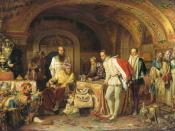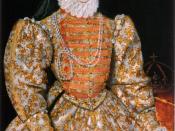A Midsummer Night's Dream is one of Shakespeare's early "festive comedies," written around 1595-6. Despite the many thematic references to "dreams" and the fantastic setting of the Athenian forest, the play also contains a fair amount of commentary on Shakespeare's contemporary English world. The play's title, for instance, refers to an English holiday custom: on "Midsummer Eve," or the night of the summer solstice on June 23, English men and women would spend the night outdoors around bonfires, telling supernatural tales of fairies and witchcraft. The play not only suggests this holiday, but also refers to "the rite of May," or "maying" - a similar English tradition that took place on the first night of May, when young men and women would engage in singing, dancing (and possibly more amorous pursuits) in the woods outside their towns. In other words, the play's title and plot recall English traditions in a way that suggests a combination of Halloween (Puck and the fairies) and a big rave (with love-juice instead of Ecstasy).
At the time that the play was written, these traditions had come under attack by the English Puritans, who thought that they were "pagan" practices that gave the people too much opportunity for mischief. By making the play have a happy ending after all its midsummer madness, Shakespeare might seem to be defending such traditions against their critics, suggesting that they are actually benign, or even desirable. It is thought that Shakespeare wrote this play to be performed first at the country house of a young nobleman, as part of his wedding festivities. If this is true, A Midsummer Night's Eve presents an astonishingly complex set of self-referential scenes. When Shakespeare's company performed Act V, for instance, the noble men and women in the first audience of the play would...


